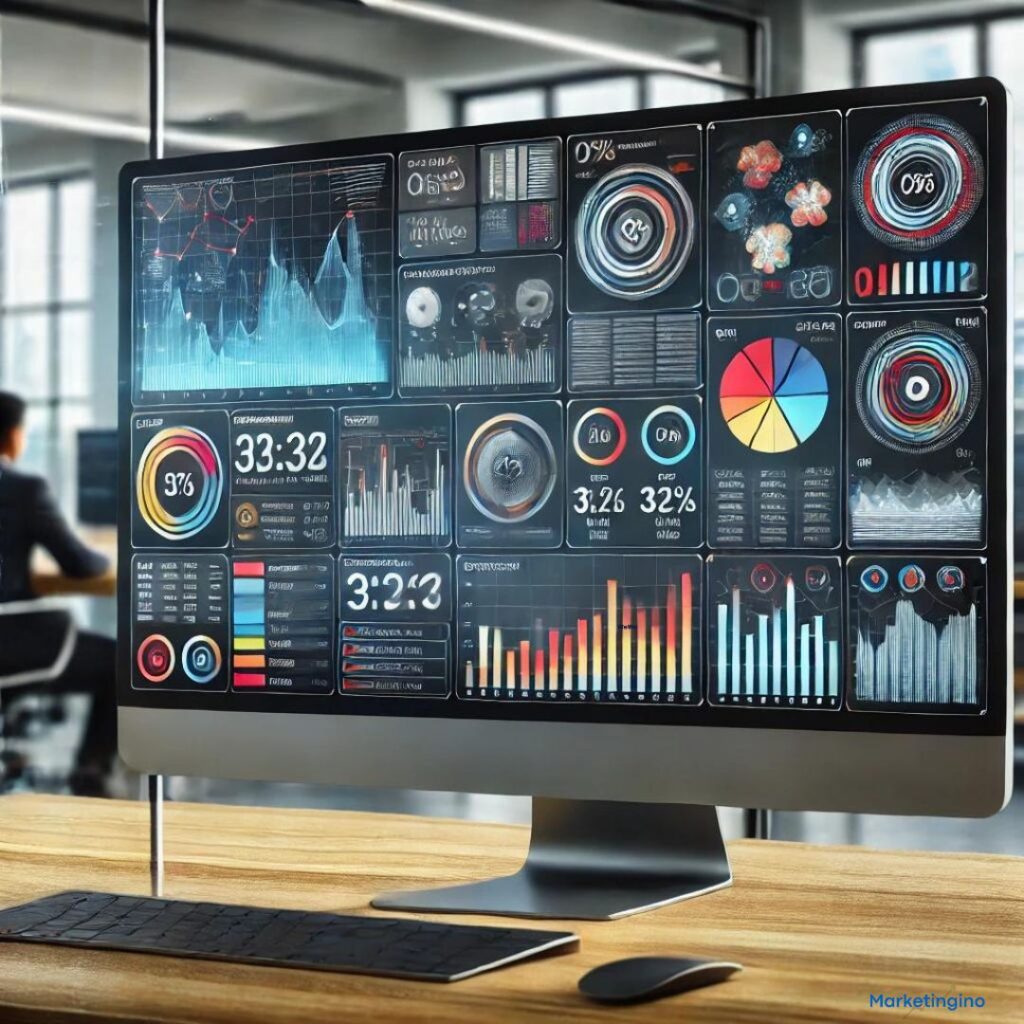In the fast-paced world of business, staying on top of key performance indicators (KPIs) and metrics is crucial for informed decision-making and strategic planning. Dashboards have emerged as indispensable tools that provide a dynamic and interactive way to track, analyze, and display data. These tools transform raw data into actionable insights, helping businesses stay agile and competitive.
What is a Dashboard?
A dashboard is a visual display interface that consolidates and organizes information from various data sources. It presents this data in the form of charts, graphs, and tables, allowing users to monitor KPIs, metrics, and other relevant data points at a glance. Dashboards are designed to be user-friendly and interactive, enabling users to customize the data they see based on specific criteria and timeframes.
Benefits of Using Dashboards
- Real-Time Data Monitoring: Dashboards provide real-time updates, ensuring that the data displayed is always current. This capability is vital for making timely decisions and responding promptly to changing business conditions.
- Enhanced Data Visualization: By converting complex data sets into visual elements, dashboards make it easier to comprehend and analyze information. Visualizations such as bar charts, line graphs, and pie charts highlight trends and patterns that might be missed in raw data tables.
- Improved Decision-Making: Access to real-time and easily interpretable data allows decision-makers to base their strategies on solid evidence rather than intuition. This leads to more informed and effective business decisions.
- Increased Efficiency: Dashboards consolidate data from multiple sources into a single interface, reducing the time spent gathering and compiling reports. This efficiency allows teams to focus on analysis and action rather than data collection.
- Customization and Interactivity: Users can tailor dashboards to their specific needs, selecting the KPIs and metrics most relevant to their roles. Interactive features, such as filters and drill-down options, provide deeper insights and a more granular view of the data.
Key Components of an Effective Dashboard
- Relevant Metrics and KPIs: The foundation of any dashboard is the selection of appropriate metrics and KPIs that align with business goals. These should be specific, measurable, and actionable.
- Clear and Intuitive Design: A well-designed dashboard is easy to navigate and understand. It should prioritize clarity and simplicity, avoiding unnecessary clutter and focusing on key information.
- Real-Time Data Integration: The ability to pull data from various sources in real time is essential. This integration ensures that the dashboard reflects the most current information available.
- Customizable Views: Different users have different needs. A versatile dashboard allows users to customize their views, select specific data ranges, and apply filters to focus on the most relevant information.
- Interactive Features: Interactivity enhances the usefulness of a dashboard. Features such as drill-downs, hover-over details, and clickable elements allow users to explore the data more deeply.
Applications of Dashboards Across Industries
- Business Management: Dashboards help managers track financial performance, sales metrics, and operational efficiency. They provide a comprehensive view of the business, facilitating strategic planning and performance monitoring.
- Marketing: Marketing dashboards track campaign performance, customer engagement, and conversion rates. They enable marketers to optimize strategies based on real-time feedback and data-driven insights.
- Healthcare: In healthcare, dashboards monitor patient outcomes, resource utilization, and staff performance. They support decision-making processes aimed at improving patient care and operational efficiency.
- Manufacturing: Manufacturing dashboards display production metrics, quality control data, and supply chain information. They help identify bottlenecks, reduce waste, and enhance overall productivity.
- Education: Educational institutions use dashboards to track student performance, attendance, and resource allocation. These insights help in improving educational outcomes and administrative efficiency.
The Future of Dashboards
As technology continues to evolve, the capabilities of dashboards are expected to expand. Integration with artificial intelligence (AI) and machine learning (ML) will enable predictive analytics, providing foresight into future trends and potential challenges. Enhanced interactivity and user experience, driven by advancements in user interface design, will make dashboards even more intuitive and accessible.
In conclusion, dashboards are powerful tools that transform data into actionable insights, supporting better decision-making and strategic planning. By providing real-time, visual representations of key metrics and KPIs, dashboards help businesses stay agile and competitive in an ever-changing landscape. Investing in effective dashboard solutions is a critical step toward harnessing the full potential of data-driven decision-making.




